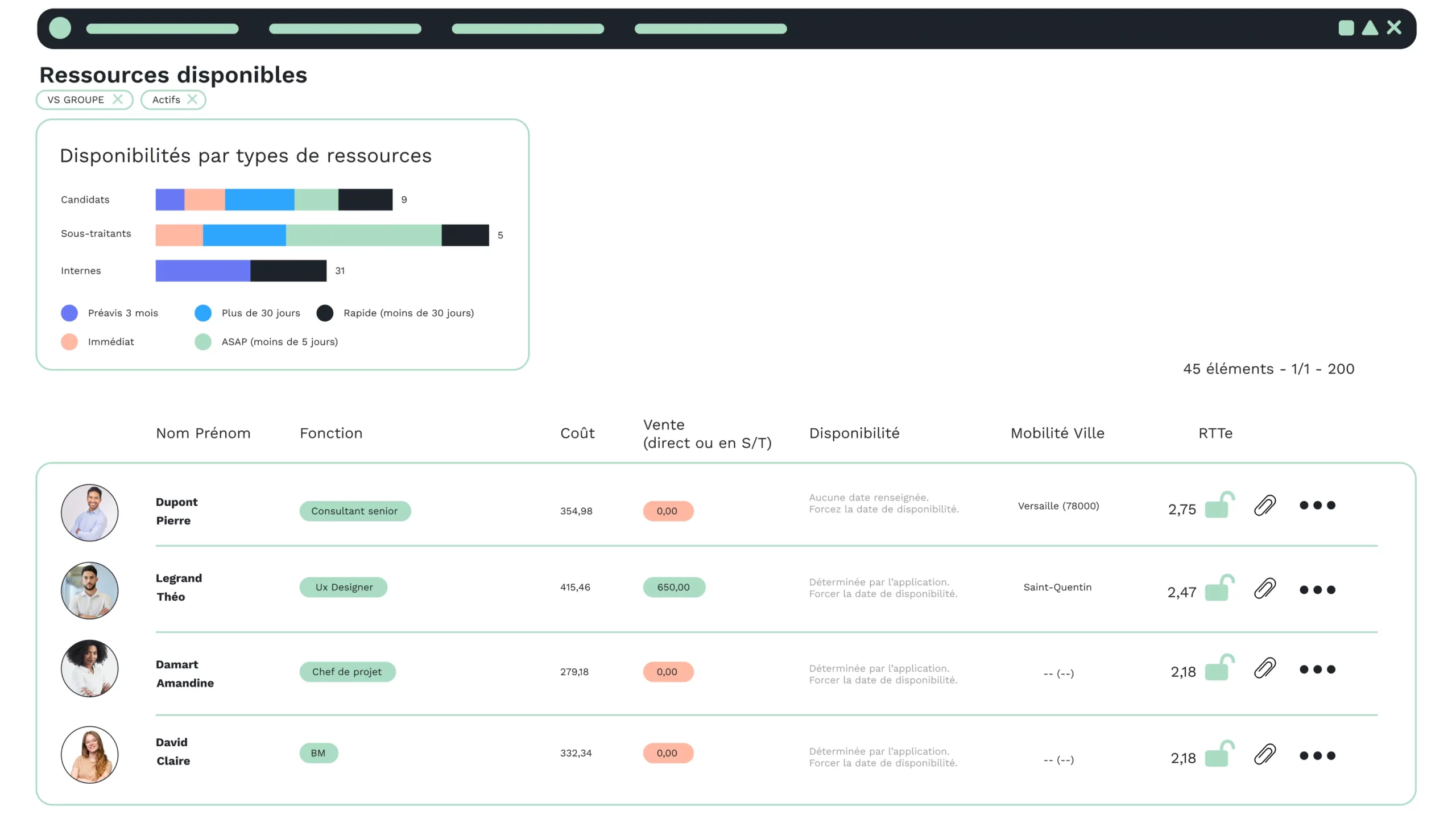54%* of Purchasing Departments believe they do not have the tools to understand the financial reliability of their suppliers. Added to this is the fact that only 10% of companies surveyed have a comprehensive predictive risk identification and elimination tool.
As Purchasing Manager, your role is to procure the goods and services needed to keep the company running smoothly, and to contribute to its profitability and competitiveness in the marketplace.
To achieve this, you need to increase the company’s margin, watch out for stock shortages and ensure on-time delivery. But how can purchasing management software help you optimize this process?
To understand this, we need to analyze the various stages in the purchasing process.
The corporate purchasing process
The corporate purchasing process defines the various stages involved in the act of buying.
This process can be broken down into 11 phases:
#1 The purchase requisition
This is the expression of needs through specifications. The internal customer will determine the material goods or services he needs.
Several elements must be included in the specifications:
- The context of the purchase.
- Product and service features.
- The objectives.
- The budget.
- Delivery date.
- Etc.
#2 Receipt of request by Purchasing department
On receipt of the request, the Purchasing department will study it and take into account several criteria such as quantity, budget, nature of the need, etc.
A quotation is then drawn up and sent to the Purchasing Manager for approval.
#3 Invitation to tender
Back with the buyers, a call for tenders is issued. This step gives rise to two possibilities:
- The invitation to tender is sent to suppliers from the company’s database.
- We need to find suppliers.
The invitation to tender is sent to suppliers in the company’s database
Suppliers from the company’s database are known and evaluated. So there’s very little risk of unpleasant surprises. For the second possibility, however, this is not the case.
We need to find suppliers.
The Purchasing department needs to research potential suppliers who could meet the specifications. But these have yet to be evaluated. So there’s a risk in terms of product and service quality.
#4 Sending the invitation to tender
Once the suppliers have been identified, the call for tenders is sent out so that the suppliers can consult the offer and make a commercial proposal.
A number of documents are required for this phase:
- An acknowledgement of receipt to be returned by suppliers.
- A document presenting the project.
- Specifications.
- Terms and conditions.
- Etc.
#5 Bid response
The Purchasing department receives the various commercial proposals from the selected suppliers. It must now analyze the proposals according to the eliminatory criteria.
#6 Sales proposal studies
Based on the project requirements and the criteria considered as eliminatory, the Purchasing department analyzes the commercial proposals of the various suppliers.
Several criteria come into play: product or service, price, delivery times, payment terms, etc.
#7 Negotiations
Once the selection process is complete, it’s time to negotiate with the chosen supplier(s).
#8 Decision-making
Depending on the progress of negotiations, a supplier is chosen. A purchase order is then issued, sealing the commercial relationship between the supplier and the company.
This purchase order includes all the information needed to track the order: description, price, date, references, etc.
The Purchasing Manager must also ensure that all the rules have been respected, such as the presence of supporting documents, delivery deadlines, competitive bidding, etc.
#9 Order tracking
Up to the moment of delivery, several documents may be exchanged between the Purchasing department and the supplier (reminders notices, etc.).
#10 Reception
This involves checking that the purchase order and delivery note are in conformity.
#11 Payment
At this stage, it’s important to check that all elements are correct: references, quantities, etc.
All in all
The purchasing process is tedious and requires numerous exchanges between employees, the company and the supplier. These exchanges are not conducive to productivity, and the wait is long for the internal customer.
A simple purchase requisition becomes a complex process in which employees waste a lot of energy for little added value.
The company needs a tool to control these numerous exchanges, keep track of them and monitor them more precisely.
This is where the purchasing management software comes into play. The latter provides a great deal of comfort to the Purchasing department, enabling it to optimize this process.
What is purchasing management software?
Purchasing management software is a solution that will help you optimize all stages of the purchasing process.
The functionalities offered by purchasing management software enable you to monitor your company’s budget, invoices, orders, deliveries, etc.
Purchasing software features
VSA’s Purchasing module lets you manage your suppliers and track your purchases. To achieve this, a number of functions are available, the main ones being :
- Supplier database with evaluation and tracking of legal documents (Kbis, insurance, etc.).
- Base of products and services.
- Purchase requisition workflow by category and amount range.
- Automatic receipt of invoices from subcontractors (services resold).
- Management of any supplier credit notes.
- Integrated OCR for importing purchase invoices of any kind, individually or in batches.
- Follow-up of supplier payments, and SEPA export for bank transfer payments.
- Accounting exports of invoices, credit notes and payments.
- And much, much more…
How can purchasing management software help you optimize this process?
The various functions of the purchasing management software allow you to follow the process from A to Z without losing any data, but that’s not all:
Centralized information
Data is centralized on a single platform, making it easier to access for the various parties involved in the purchasing process.
Task automation
One of the weak points of the purchasing process is the numerous non-value-added ancillary tasks, such as the tedious exchanges between the various parties involved in the purchasing process.
Automating certain tasks saves time at certain stages of the process. For example, back and forth for validation by the purchasing manager.
History of exchanges
The advantage of management software lies in its history, which enables you to keep track of all exchanges that have taken place. No need to run after the employee in charge and/or his Excel file.
Better tracking of process steps
The data integrated into the software enables better tracking of each stage in the process, such as receipt of delivery note, advance notice, etc.
Reporting dashboards
Remember, Purchasing departments had no tools for analyzing their department’s data, either from a financial point of view in relation to suppliers, or from a risk anticipation point of view.
However, risk management and a reliable supplier list are among the most important tasks of a purchasing manager.
Through the dashboards and reporting provided by the purchasing management solution, the purchasing department can quickly identify risks and make strategic and/or operational decisions based on performance indicators.
In short, purchasing management software gives you better control over the various flows of information, greater responsiveness thanks to available data and alerts, and above all a reduction in time-consuming administrative tasks.
*Source: AgileBuyer- CN study, Trends and priorities for purchasing departments in 2020.
Read also







